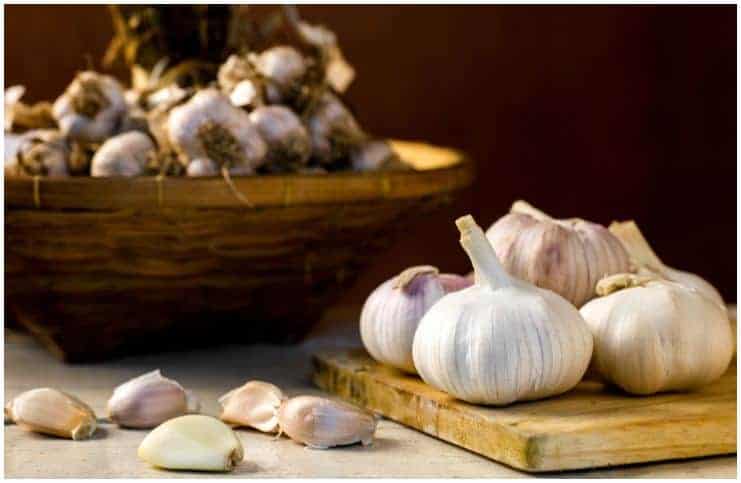Shallot
It is a type of onion and a member of the Amaryllidaceae plant family. Also, it has a distinct smell as compared to garlic and onions.
Nutrition Facts
This vegetable is a good source of dietary fiber, potassium, protein, vitamin C, vitamin B6, folate, magnesium, zinc, vitamin A, and manganese. Also, it contains flavonoid antioxidants, like – kaempferol and quercetin.
Health Benefits
Iron Anemia Prevention
Iron anemia is the most common and widespread nutritional disorder in the United States and worldwide. This condition may affect auditory and visual functioning and is linked with gastrointestinal disturbances and poor cognitive development in children.
This vegetable contains iron, an essential mineral that is involved in the production of hemoglobin, the main transport of oxygen throughout the human body.
Type 2 Diabetes
It contains allyl disulfide and allium. Together, these plant compounds help regulate your blood glucose levels, helping type 2 diabetics to keep their condition under control.
Type 2 diabetes mellitus is a chronic disease linked to abnormally high levels of glucose in the blood. This type of diabetes used to be medically called adult-onset diabetes. However, with the epidemic of overweight and obese kids in the last decade, more teenagers are now developing diabetes mellitus.
Cardiovascular Health
One of the most important health benefits of this vegetable is that it helps prevent heart disease and is extremely beneficial for the blood. This vegetable is an excellent source of potassium, a renowned vasodilator, which helps the walls of the blood vessels relax as well as it transmits nerve impulses.
For instance, one cup has about 534 mg of potassium which is more than 11 percent of the daily recommended intake.
Antioxidant Properties
Allicin, a compound found in this vegetable, has antioxidant properties and it stimulates the production of glutathione (frequently called a “master antioxidant”), according to a 2013 study done at the Department of Applied Biology, Hong Kong.
Moreover, allicin reduces cholesterol production by inhibiting the HMG-CoA reductase enzyme (an action similar to statins drugs) in the liver cells. Additionally, allicin has antiviral, antibacterial, and antifungal attributes.
Side Effects
It is a healthy and nutritious vegetable with no side effects, however, due to its sulfur compounds, it may cause mucous and eye mucous membrane irritation, particularly during slicing or chopping.
Garlic
Garlic (scientific name – Allium sativum) is used widely as a flavoring in cooking, however, it has also been used as a natural medicine for a variety of ailments.
Nutrition Facts
It is a remarkable source of selenium, vitamin B6 (pyridoxine), iron, manganese, calcium, vitamin C, phosphorous, calcium, selenium, zinc, potassium, and copper. In addition, it contains many vital nutrients, including – oligosaccharides, flavonoids, allicin, and alliin, as well as reasonable levels of sulfur.
Health Benefits
Blood Sugar
According to research, this vegetable considerably reduced blood sugar levels, especially for people with type 2 diabetes.
Long-term complications of type 2 diabetes mellitus include:
- sexual dysfunction;
- autonomic neuropathy causing genitourinary, gastrointestinal, and cardiovascular symptoms;
- amputations;
- peripheral neuropathy with a high risk of foot ulcer;
- nephropathy that may lead to renal failure;
- retinopathy with the potential loss of vision.
Lower Hypertension
Hypertension is defined as a regular elevated blood pressure exceeding 140 over 90 mmHg. This increase in pressure may cause damage to the walls of the arteries. If untreated, hypertension can lead to life-threatening problems throughout the human body, especially in the brain, heart, and kidneys.
More importantly, this vegetable helps to prevent cardiovascular diseases by lowering LDL and total cholesterol levels as well as it decreases platelet aggregation (the process by which platelets adhere to each other at vascular injury sites).
Antibacterial Properties
The sulfur-containing compounds found in this vegetable have potent anti-fungal and anti-bacterial properties. Moreover, according to some studies, allicin may even help prevent some types of cancer, especially colon cancer.
In addition, according to a 7-year study issued in “Cancer Prevention Research,” individuals who consumed raw garlic at least three times per week experienced lower rates of lung cancer than people who didn’t eat it.
This is good news for many individuals since lung cancer (both non-small cell and small cell) is the 2nd most frequent cancer in both wimmin and men. For instance, 155,526 people in the US died from lung cancer, including 70,667 women and 84,859 men.
Moreover, 215,951 Americans were diagnosed with this form of cancer, including 102,625 women and 113,326 men. Worldwide, Hungary has the highest rate of lung cancer, closely followed by North Korea and Serbia.
Heavy Metals Detox
Heavy metal poisoning is the chronic accumulation of heavy metals in the soft tissues of the human body. In the last decade, there has been an increasing global public health concern regarding the environmental contamination by these heavy metals.
The sulfur compounds in this vegetable considerably help in detoxifying heavy metals as well as other toxins in the blood.
Side Effects
There are no scientifically proven side effects.
Shallots vs Garlic – Which Has A Better Nutritional Profile?
Both vegetables should be included in everyone’s regular diet, however, garlic has a superior nutritional profile due to its higher content of iron, calcium, vitamin C, vitamin B1, vitamin B6, manganese, copper, and selenium.
Images credit – Shutterstock & Getty
READ THIS NEXT: Soursop vs Cherimoya – Side Effects
References http://www.umm.edu/health/medical/altmed/herb/ http://fsg.afre.msu.edu/promisam_2/references/DAlessandro_2008
